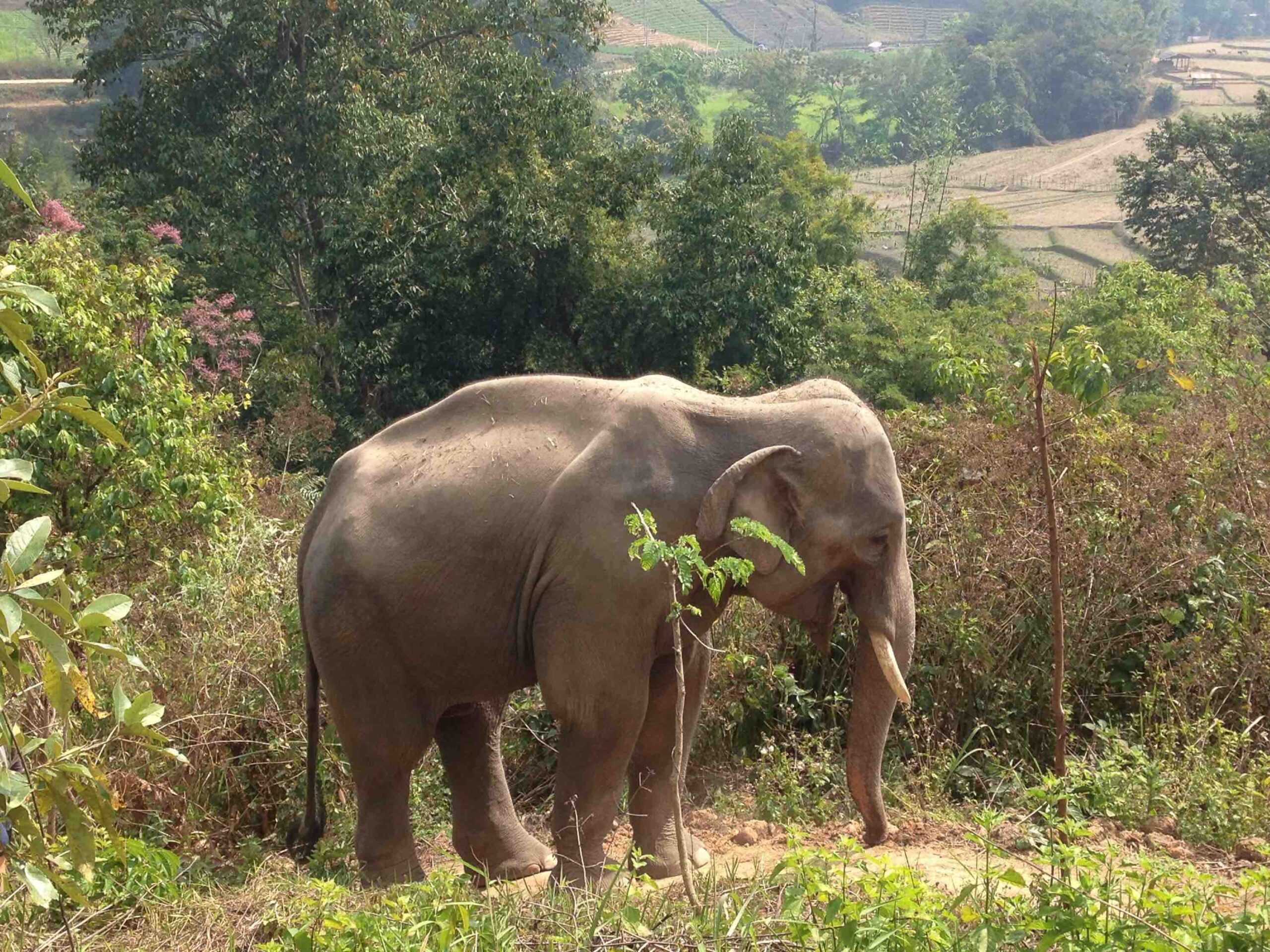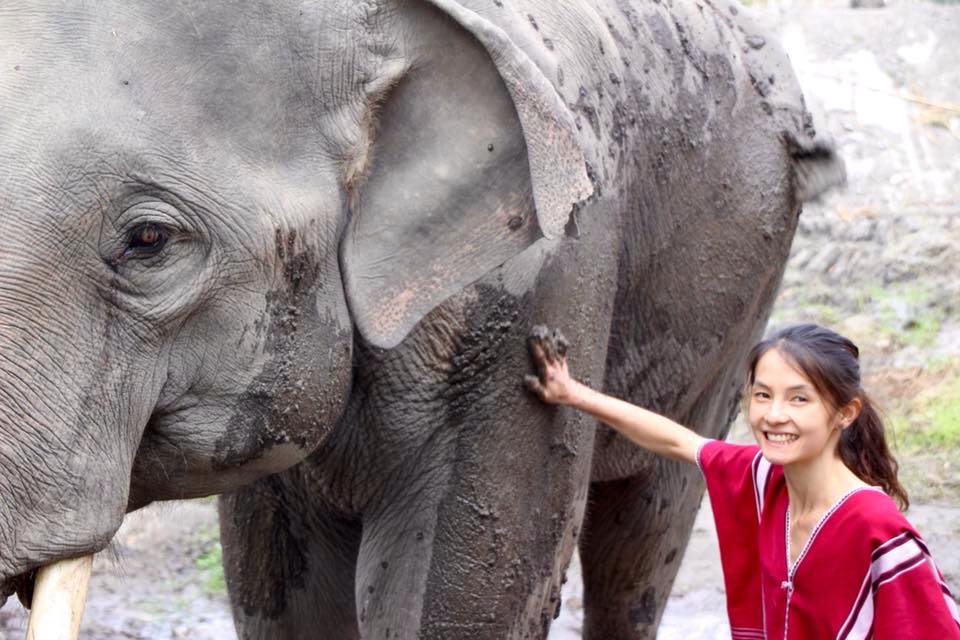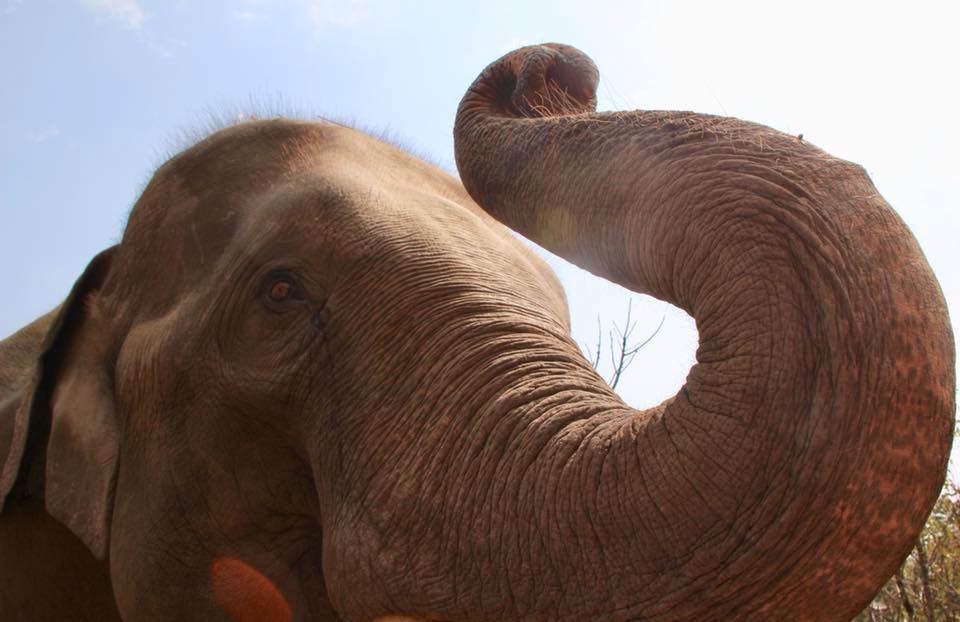An elephant never forgets, they say, and that is evident in the intelligent creatures rescued by the Save Elephant Foundation. They arrive at Elephant Nature Park after a life of forced begging, performing and giving rides to tourists. Those rescued from less-than-benign owners often show signs of severe psychological trauma and it can take a while for them to learn to trust humans. They may look cute, but an elephant swaying its head from side to side is a sign of mental distress. Thailand banned logging with elephants in 1989 but forcing them to perform and give rides in circuses and camps is still legal, despite the serious long term harm done to these magnificent creatures.
Enter Lek Chailert, founder of the Save Elephant Foundation. Lek’s dream to create an elephant safe haven has blossomed into the Elephant Nature Park in Chiang Mai and several other Foundation projects in Thailand, Cambodia and Myanmar. Visitors are most welcome (volunteers even more so!) and there are several tours on offer, from half day to three day encounters with the rescued elephants. There is strictly no riding; instead, experiences include feeding (a never-ending task!), walking, bathing, and pampering the elephants with a mud spa.

I recently hosted visitors who wanted to “do elephants ethically”. After a spot of Googling and scouring Trip Adviser, I decided Elephant Nature Park looked the best of the few genuinely “ethical” Thai elephant experiences out there. We chose the “Elephant Freedom” day trip to a Karen village a couple of hours outside Chiang Mai. A tour van collected us and seven other elephant-seekers from our hotels in the city and we set off into the hills. The long ride was lightened by a documentary about the Foundation and a cartoon character demonstrating how not to behave around the elephants (I suspect he received a rather hefty hospital bill afterwards).
Fortunately our day trip was far less injurious than the cartoon’s. We were welcomed with tea, coffee and biscuits, clean toilets and a chance to stretch out and relax after the long journey. After donning our straw hats we met our four-legged friends: Dodo, an ever-hungry teenager; Kaamun, a one-tusked young lad; and Grandma Kham Paan, the sixty-something-year-old matriarch. The first task, feeding them sugarcane sticks, was easy enough. Then came walking with them in their natural habitat, a journey made slower by their frequent stops to munch on every bit of greenery en route.
We returned to our own vegetarian lunch, followed by making elephant protein balls: delightful, if mushy, concoctions of cooked rice, rice powder, bananas, and salt.

Next up: bathing the elephants. Mud squelched through my toes as I waded shin-deep into their spa, bucket in hand. The ten of us sloshed muddy water up onto huge walls of dry, wrinkly skin, like a hand car-wash (though a touch less glamorous). Soaked but satisfied, we and the elephants returned to dry land for yet more feeding. This time the menu was sugar cane, bamboo, bananas and a dessert of sun-baked protein balls. After plenty more photos we piled back into the van, exhausted but full of fabulous memories that I, and hopefully the elephants, will never forget.
The Save Elephant Foundation also runs programs protecting dogs and promoting forest conservation. Read more about their many projects, tours and volunteer opportunities here.

Photo Credit: Byul Ryan-Im & Elizabeth Ryan







